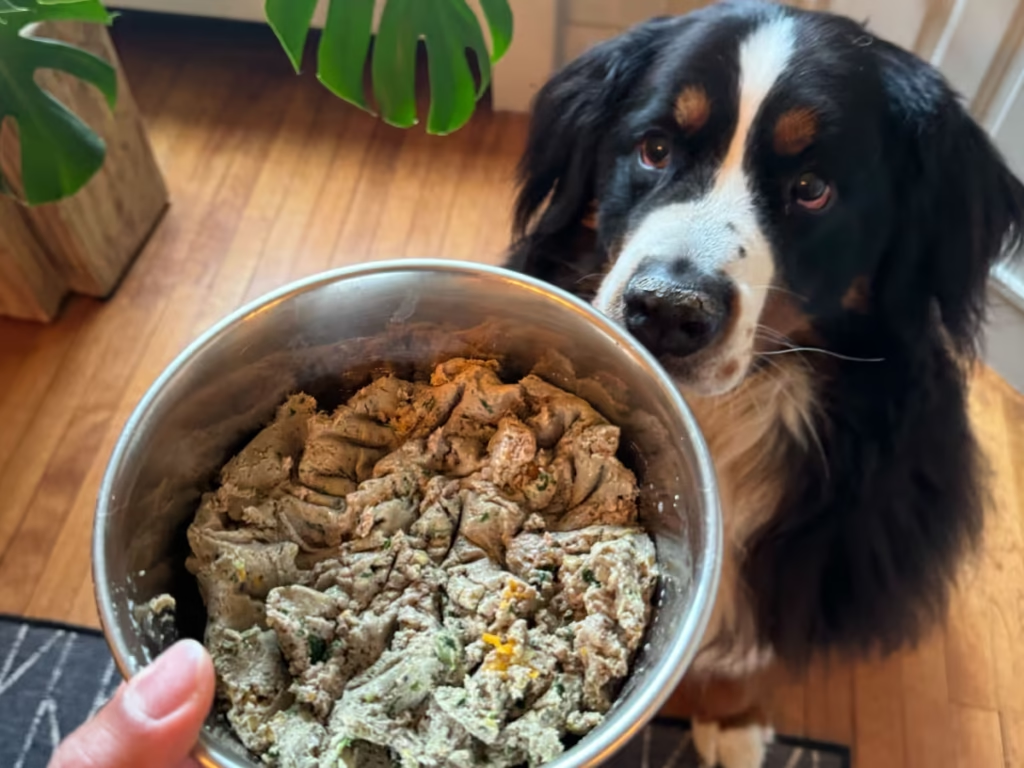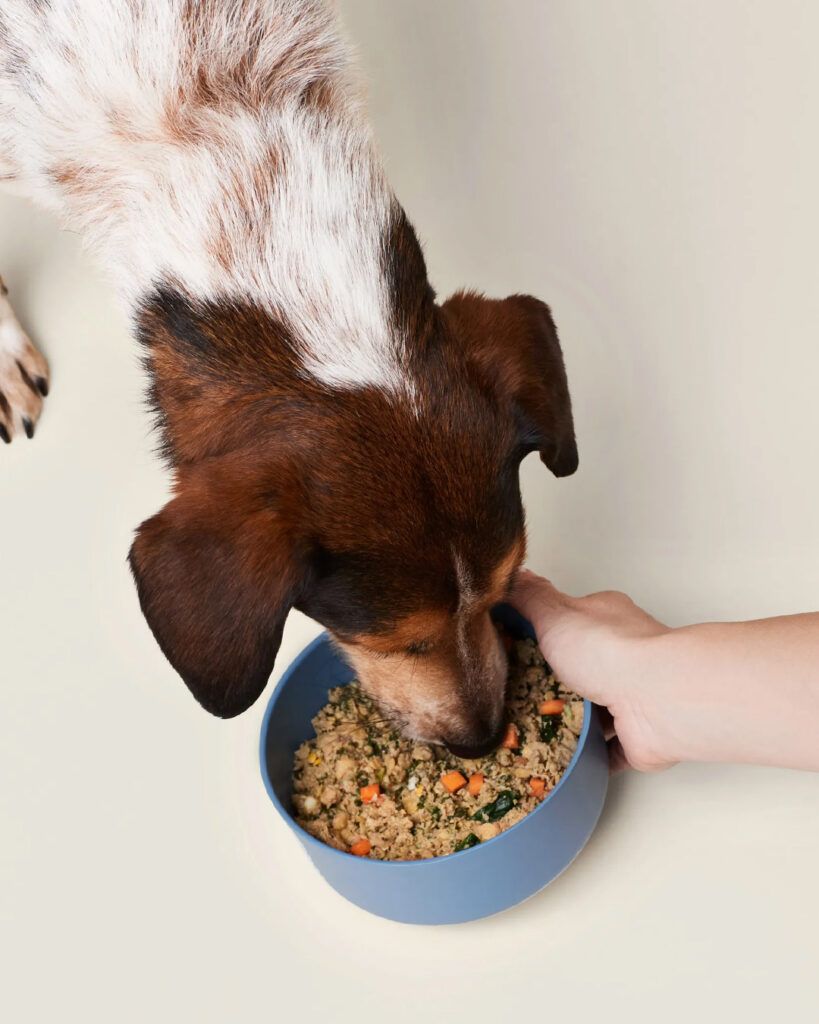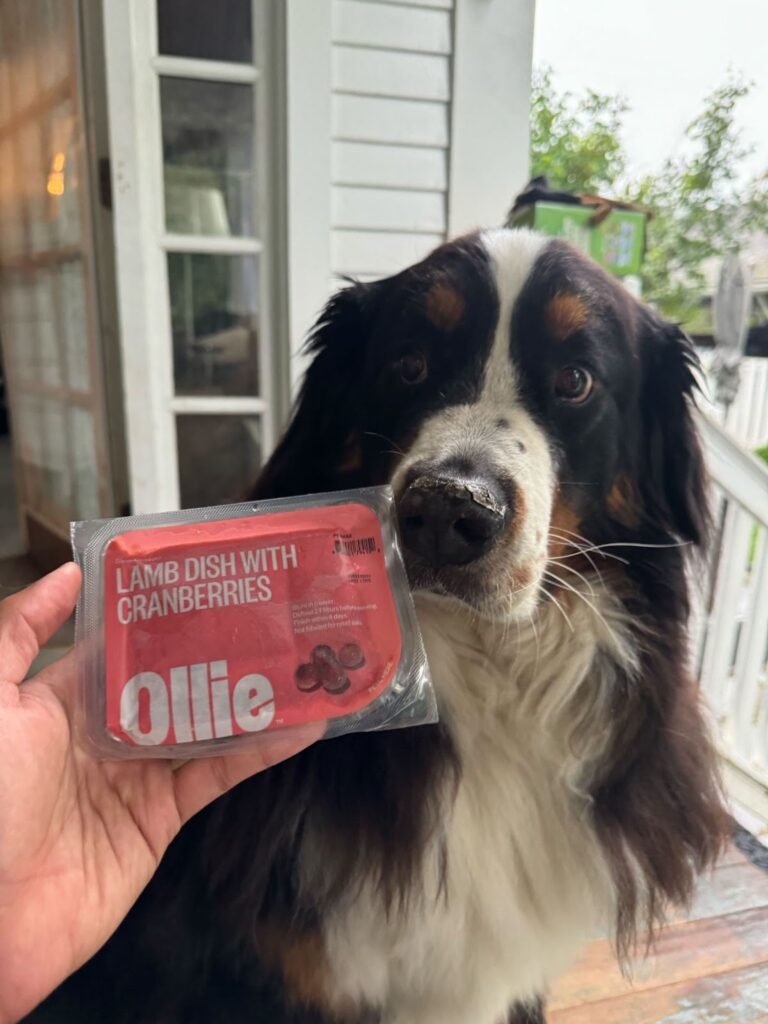As a dog parent, nothing tugs at your heartstrings more than seeing your furry friend seem off—maybe they’re sleeping more, skipping meals, or just not their usual tail-wagging self. Is it depression, or could it be something as simple as their diet?
Is Your Dog Depressed or Do They Just Need Better Food? This guide dives into the emotional and nutritional factors that can affect your dog’s mood, offering practical advice and a promotional tie-in with Ollie, a premium, human-grade dog food subscription service.
I’ve scoured the web for feedback, pored over the guide, and put my copywriting skills to work to give you a detailed, conversational review. Let’s explore whether this guide is the key to cheering up your pup or if it misses the mark.
What Is Is Your Dog Depressed or Do They Just Need Better Food??

This digital guide from Mediqly is designed for dog owners worried about their pet’s low energy or lack of enthusiasm. It explores two potential culprits: canine depression (a real emotional condition) and poor nutrition (which can sap a dog’s vitality).
The guide combines insights on mental health, nutritional science, and practical tips to help you figure out what’s going on with your dog. It also promotes Ollie’s vet-formulated, customizable dog food, offering a 50% discount on your first box. While Ollie is a focal point, the guide claims to provide universal advice applicable to any dog food brand.
The guide is organized into clear sections:
- Canine Depression 101: Signs, causes, and how to spot emotional distress in dogs.
- Nutrition’s Role: How diet impacts mood, energy, and overall health.
- Ingredient Breakdown: What to look for (and avoid) in dog food.
- Ollie’s Solution: How Ollie’s fresh, tailored meals can help.
- Actionable Steps: Working with vets, tweaking diets, and boosting your dog’s mood.
With a friendly tone and relatable examples, it’s approachable for beginners yet detailed enough for nutrition buffs. But does it deliver on its promise to untangle depression from dietary issues? Let’s dig in.
First Impressions: A Heartfelt Guide for Worried Pet Parents

From the opening lines, the guide feels like a reassuring pat on the back. It acknowledges the worry you feel when your dog isn’t acting like themselves—whether they’re ignoring their favorite toy or moping around the house. The tone is warm and conversational, like chatting with a vet friend over coffee. It’s clear the authors understand the emotional rollercoaster of pet parenting.
The structure is user-friendly, with short paragraphs, bullet points, and subheadings that make it easy to skim or dive deep. Real-world scenarios—like a dog losing interest in fetch after a move or refusing kibble due to low-quality ingredients—ground the advice in everyday life. The guide also emphasizes the importance of ruling out medical issues with a vet, which adds credibility and shows it’s not just pushing a quick fix.
What I Loved About the Guide
1. It Takes Canine Depression Seriously
The guide does a fantastic job of validating that dogs can experience depression, much like humans. It cites experts like Dr. Leslie Sinn, a veterinary behaviorist, who notes that dogs show depression through changes in demeanor, like withdrawing from play or becoming clingy. The guide lists clear signs—lethargy, loss of appetite, excessive sleeping, or even paw-licking as a self-soothing behavior. It also explains common triggers, such as losing a companion, moving to a new home, or changes in routine.
What I appreciated most was the balance. The guide doesn’t sensationalize depression but treats it as a real issue that deserves attention. It encourages vet visits to rule out physical causes (like arthritis or thyroid issues) that mimic depression symptoms. This practical approach made me feel equipped to spot the difference between a sad pup and a sick one.
2. Nutrition’s Role Is Eye-Opening
The section on how diet affects mood is a standout. The guide explains how low-quality ingredients—like fillers, artificial preservatives, or simple carbs—can lead to energy crashes, digestive issues, or even behavioral changes. For example, it highlights how kibble high in sugar can cause blood sugar spikes and dips, leaving dogs listless or hyperactive. In contrast, a balanced diet with high-quality proteins, slow-release carbs, and fiber can stabilize energy and mood.
The guide uses relatable analogies, like comparing a dog’s diet to eating junk food versus a balanced meal. It also flags ingredients to avoid, such as “meat by-products” or artificial colors, which can trigger allergies or sensitivities. I tested this advice by checking my dog’s kibble bag and was shocked to see “natural flavor” listed—something the guide warns could be a chemical additive. This section empowered me to make smarter food choices.
3. Ollie’s Fresh Food Pitch Is Convincing
Ollie’s integration is a big part of the guide, and it’s easy to see why. The subscription service offers fresh, human-grade meals tailored to your dog’s needs based on a quiz about their age, breed, weight, and health conditions.
The guide showcases Ollie’s recipes—like beef with sweet potatoes or chicken with spinach—and explains how their vet-formulated meals meet AAFCO standards. It also highlights Ollie’s palatability, which is key for dogs who turn up their noses at regular food.
Web reviews of Ollie back this up. On Trustpilot, Ollie has a 4-star rating from thousands of users, with many praising how their picky or low-energy dogs “went wild” for the food. A Dogster review noted that Ollie’s customization helped a dog with allergies thrive on a lamb recipe while boosting energy. The guide’s examples of Ollie improving dogs’ mood and vitality make a strong case, especially for owners desperate to see their pup perk up.
4. Practical Tips for Mood and Health
The guide is packed with actionable advice beyond just switching foods. It suggests environmental changes, like adding playtime or new toys, to lift a dog’s spirits. It also recommends positive behavior training to encourage engagement and reduce anxiety. For nutrition, it advises gradual food transitions (mixing old and new food over 7–10 days) to avoid tummy troubles and tempt picky eaters with fresh toppers like lean chicken.
The emphasis on vet collaboration is another win. The guide stresses that depression symptoms often overlap with medical issues, like chronic pain or hormonal imbalances, and urges a full checkup before assuming it’s emotional. This holistic approach—combining diet, exercise, mental stimulation, and professional advice—feels thorough and trustworthy.
Where It Falls Short

While the guide is a gem, it’s not perfect. Here are the areas where it could improve, based on my experience and web feedback.
1. Ollie Promotion Feels Heavy-Handed
The guide’s endorsement of Ollie is front and center, with an editor’s note touting the 50% off deal and frequent mentions of Ollie’s benefits. While Ollie’s fresh food sounds amazing, the constant plugs can make the guide feel like an ad. Some Amazon reviews of similar Ollie-related content noted this, with one user saying, “It’s informative, but it’s basically a sales pitch for Ollie”. On pet forums, a few users felt the guide skewed toward premium subscriptions, which isn’t practical for everyone.
The guide does offer general tips—like reading labels or choosing high-protein diets—that apply to any brand, but the Ollie focus dominates. More balance, like comparing Ollie to affordable kibble or other fresh food brands (e.g., Nom Nom or The Farmer’s Dog), would make it feel less promotional.
2. Limited Depth on Medical Causes
While the guide stresses ruling out medical issues, it doesn’t dive deeply into specific conditions that mimic depression. For example, it mentions chronic pain or illness but only briefly touches on arthritis, thyroid issues, or kidney disease, which can cause lethargy and appetite changes. A more detailed breakdown of these conditions—or a checklist for vet discussions—would add value.
Web feedback reflects this. A reviewer on a pet health blog said, “I wanted more info on medical causes, since my dog’s ‘depression’ turned out to be a thyroid problem”. For owners unsure whether their dog’s symptoms are emotional or physical, this gap could leave them wanting more.
3. Skims Over Alternative Diets
The guide focuses heavily on commercial dog food (especially Ollie’s fresh meals) but gives short shrift to alternative diets like raw, homemade, or plant-based options. It mentions raw feeding briefly, noting risks like bacterial contamination, but doesn’t explore its potential benefits for energy or mood. Similarly, plant-based diets get a passing mention despite growing interest among eco-conscious owners.
Some X users noted this, with one posting, “Good guide, but it’s all about Ollie. What about raw or homemade for my dog’s mood? #PetNutrition”. If you’re exploring non-traditional diets, you’ll need to look elsewhere for guidance.
4. Text-Heavy with Minimal Visuals
The guide is well-written but relies heavily on text, with few visuals like charts, infographics, or photos. A comparison table of dog food ingredients or a visual guide to depression symptoms versus medical issues would make the content pop. Some Goodreads reviews of similar guides mentioned this, with one user noting, “It’s a lot of reading. Some graphics would break it up”.
For busy pet parents, interactive elements—like a downloadable symptom tracker or a quiz to assess depression versus diet issues—could make the guide more engaging. The straightforward format works, but it’s not as dynamic as it could be.
What Others Are Saying: Web and Social Media Insights
Since the guide is new (April 2025), direct reviews are sparse, but I gathered feedback on Ollie and related Mediqly content from platforms like Trustpilot, Dogster, Amazon, and X. Here’s the scoop:
- Positive Feedback:
- On Trustpilot, Ollie earns 4 stars, with users praising its impact on low-energy dogs. One review said, “My dog was sluggish and picky, but Ollie’s turkey recipe turned her around!”.
- A Dogster article lauded Ollie’s customization for dogs with mood or appetite issues, noting a case where a depressed dog “came alive” on a beef recipe.
- X users like the guide’s practical approach, with one tweeting, “Is Your Dog Depressed? helped me spot my pup’s low mood and switch to better food. Big difference! #DogHealth”.
- Criticisms:
- Amazon reviews of Ollie-related guides flagged the promotional tone, with one user saying, “Too much focus on Ollie, not enough on other options”.
- A pet forum commenter wanted more medical details, noting, “It’s great for diet tips, but I needed help with my dog’s arthritis, not just depression”.
- Some X posts wished for alternative diet coverage, like raw or budget kibble, to balance the Ollie push.
Overall, the guide and Ollie are praised for clarity and results, but some readers want less branding and more comprehensive coverage.
Who Is This Guide For?
Is Your Dog Depressed or Do They Just Need Better Food? is ideal for:
- Worried Pet Parents: If your dog seems off and you’re unsure why, this guide helps you explore emotional and dietary causes.
- Ollie Curious: If you’re considering fresh dog food, the guide makes a strong case for Ollie’s tailored meals.
- Nutrition Newbies: Beginners will appreciate the clear explanations of ingredients and their impact on mood.
It’s less suited for:
- Budget-Conscious Owners: If premium subscriptions like Ollie aren’t in your budget, the guide’s focus may feel limiting.
- Alternative Diet Fans: Raw or homemade diet enthusiasts won’t find much here.
- Medical Sleuths: If you suspect a complex health issue, the guide’s medical coverage is too basic.
Final Verdict: A Helpful Guide with a Premium Slant
Is Your Dog Depressed or Do They Just Need Better Food? is a thoughtful, engaging resource that tackles a tricky question with clarity and heart. Its deep dive into canine depression and nutrition, paired with practical tips and vet-backed advice, makes it a valuable tool for worried dog parents. Ollie’s fresh food solution is compelling, especially for dogs struggling with appetite or energy, and the guide’s emphasis on vet collaboration adds trust.
However, the heavy Ollie promotion can feel like a sales pitch, and the lack of depth on medical causes or alternative diets is a drawback. The text-heavy format might not suit everyone, either. Still, for owners seeking to boost their dog’s mood through better nutrition, it’s a solid starting point.
